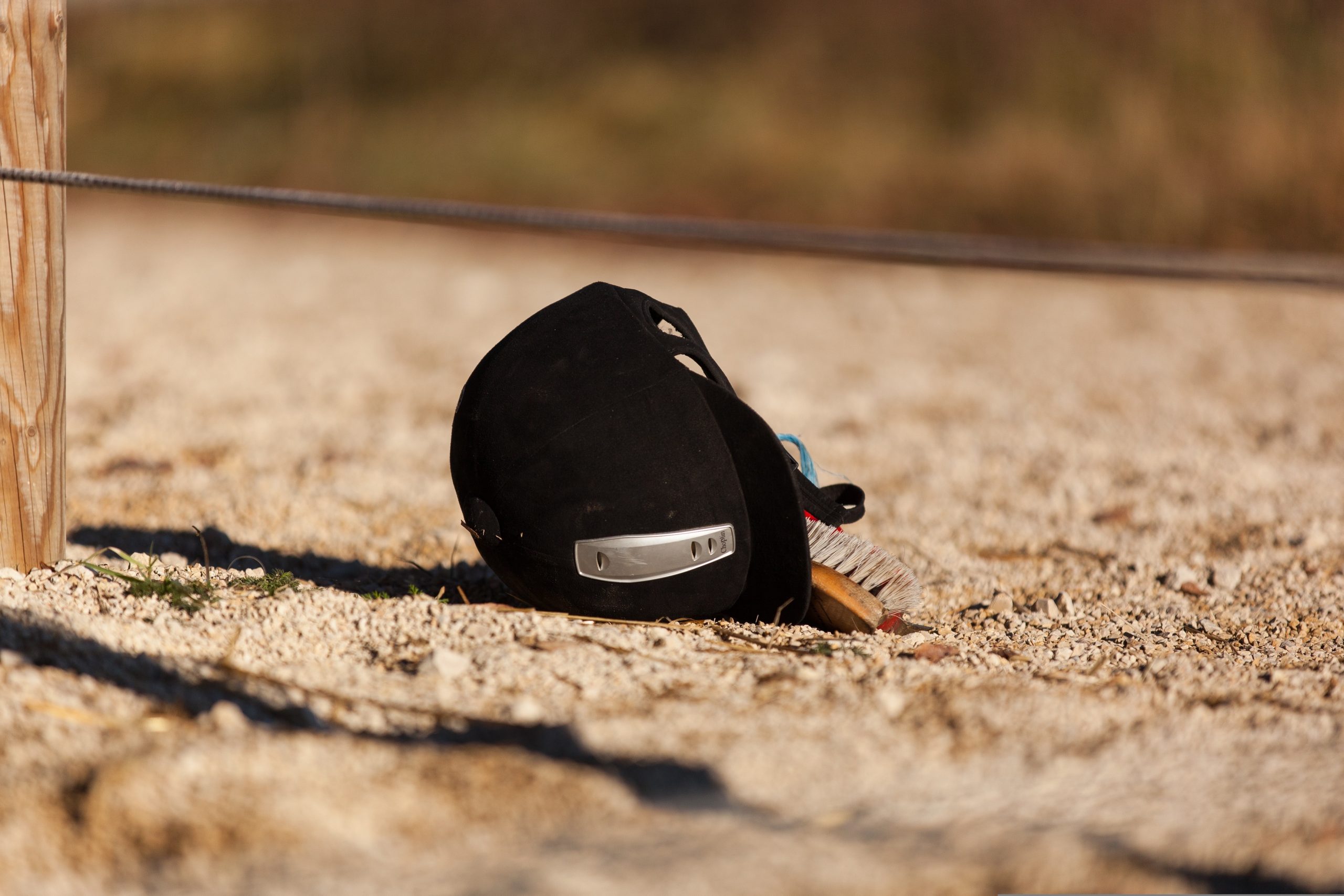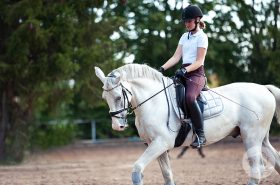All riders fall at some point even experienced ones!
The goal is to stay in the saddle, but we all know falls are inevitable as riders. There’s even an old saying that you have to fall seven times before calling yourself a real rider. The reality is most will tumble off at least once in the first few years. It’s essential you learn how to fall correctly. You can get seriously hurt, especially if you get trampled or dragged. Following these safety precautions can save your life!
Falling Tips
Ride with Proper Safety Gear
They make a whole collection of safety gear from helmets and breakaway stirrups to protective vests and gloves. These items can make a fall a whole lot better. You want to look for an ASTM/SEI certified helmet. Leave the bicycle helmet in your garage! Your head is too important to neglect. In some riding circles, it’s not “traditional” to wear one. Be a trendsetter! No one will judge you for protecting your head.
According to Ohio State University Extension, “Approximately 10%-30% of horse-related injuries are head injuries. In fact, of all sports in the U.S., equestrian sports are the most common cause of sports-related traumatic brain injury (TBI) in adults.” Luckily, a helmet can reduce head injuries by 30% and severe ones by 50%!
Tack pieces like safety stirrups are another smart investment. They make both English and Western options! If a rider was to fall, the stirrup is designed to release the foot to avoid hang-ups. It’s also important you ride with proper footwear, which is usually a heeled boot.

How to Fall
There’s usually a moment when you realize you’re going to fall. Immediately, kick your feet out of the stirrups and let go of the reins. These are two things you don’t want to get hung up on. You can always retrieve your horse later.
As you’re falling, follow these steps:
- Tuck your chin to round your back.
- Bring your arms inward across your chest.
- The impact of the fall should be targeted to the back of your shoulder.
- Roll away from the horse.
You want to keep your muscles tense, which will allow you to maintain a curled position. Avoid flailing your arms outward, as they can easily break. By hitting your shoulder, you can reduce injury to your neck and head.
Practice Makes Perfect
No one wants to fall on purpose, but it can be helpful to practice the correct falling position. There are actually some coaches that offer safety training with dummy horses and thick mats. This simulated environment allows riders to practice the tuck-and-roll method. If you do practice falling, make sure to have close supervision.
Riders can also learn how to do an emergency dismount. If you were to get in a dangerous situation, you could dismount from a moving horse. This may prevent a nasty fall!
After the Fall
First and foremost, check you and your horse over for injuries. Pain can be masked by adrenaline. If you’re both okay, then it’s ideal to get back in the saddle. You don’t want too much time to pass, as this can create fear.
You also want to think through the situation and how you handled it. This will help you get better prepared for the future. Why did you fall? Did you tuck and roll? What could you have done differently?
After every fall, you’ll need to replace your helmet. The integrity of it will be compromised. Even if you didn’t hit your head, it’s still a good idea to get a new one.
Remember, everyone falls! Do your best to be prepared and fall as safely as possible.




